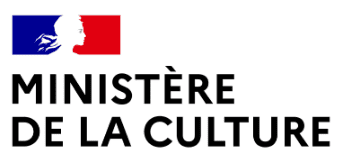Grégoire Perrier
Who and what is stirring in Water Lily Split? Children. And their mother. The lapping waves, the sound of crickets, the fire and the bottom of a swimming pool-turned-pond, and a giant shell which brings back memories. In just a few shots, Grégoire Perrier sketches a delicate path leading to Basile and Hortense,
brother and sister in their early years, on the brink of language, its emergence, and its invention. He registers the epiphenomena that punctuate their daily lives and offers us vignettes of a childhood that radiates before our eyes, in all its anger, its games, its demands. We are plunged into their intimacy as observers, confronted with the mysterious fascination of the little theatre of childhood. In this film, ‘childhood’ is the name of a garden which their mother cares for. Mute and solitary, she prunes, saws, lays stones, building the garden as much as she welcomes–not without a certain fatigue–the tears, the “pain and punches of love and anger”, the irruptions of tenderness. Emotions grow perennially and are tended to with care. Indeed, Water Lily Split posits devotion and attention as the only ingredients necessary for children to blossom like plants. Far from being moralistic or edifying, Grégoire Perrier writes an ode. Water Lily Split unfolds as a gesture of admiration for the obstinate patience that presides over the construction of this verdant microcosm. Composed of fragments and jolts, water games and botanical apparitions, Water Lily Split invents a flow in this closed and protected space, the refuge of a memory. Grégoire Perrier does not allow himself to approach the story of childhood as a continuity and instead works towards a faithfulness to resurgence, to the memory that arises from sensations. Putting his finger on the ineffable link that gives form to their coexistence as much as on the miracle of this vital force, Water Lily Split, his first film, takes us in the footsteps of Monique Wittig and Nathalie Sarraute, bathed in light and sheltered from words.
(Claire Lasolle)
- First Film Competition | French Competition
- 2021
-
 First Film Competition
First Film Competition
-
 French Competition
French Competition
- 2021
LES MUESWATER LILY SPLIT
Grégoire Perrier
Interview with Grégoire Perrier
You film the intimacy of the trio of Hortense, Basile and their mother. The presence of the camera is never felt. What was your set up and the production process? Over what period of time and at what rhythm did you collect the material you required for the film?
The film’s approach is first and foremost emotional. Being close to Hortense, Basil and their mother, I made this film with them, without pursuing a psychological dimension and whilst trying to suspend all judgement. Between 2015 and 2020, I filmed them whenever I could, and for longer in the summers. The approach varied in an intuitive way depending on the person, and the shooting and sound recording were done according to the technical and human constraints. For example, a tacit principle was established between Sandrine—the mother—and me. She only saw some of the images at a late stage and did not want to take anything out. The image of oneself is born in early childhood. For Basile, there was a bonding and a challenge in equal measure. For Hortense, the camera was at first only an everyday object, like her mother’s chainsaw.
The presence of the camera influences the people filmed, as well as the way they look at others. And this phenomenon is all the more accentuated with children, especially the fears, for example of a fall. I transmitted and focused on many things. I especially wanted to show the sensations through emphasising a sense of candour.
Sébastien Téot, the producer, knew how to link the creation process and financing with intelligence. He opened up the possibilities instead of trying to format things, always encouraging me to follow my intuition. Thanks to him, the film was able to truly find its shape and consistency. The Périphérie Association and its editing residency also supported this special working time.
How did this project start and what was the writing process like? Did you write a script?
Since our adolescence, I often photographed Sandrine. When Basile was born, he became part of the images. Then Hortense arrived and I wanted to reflect the moment of time just before her first words. The space between the bodies, their movements and also the question of speech – as a fiery, volatile necessity – made me decide to make the film. I wanted to make both the characters’ dependence and emancipation perceptible, to intimately grasp how their individualities unfold and make up the family unit. I had to write my intentions and a synopsis, and then often revise them so that the film could be produced. The writing continued up until the mixing.
You create the image of a Garden of Eden in which a certain harmony reigns. Could you tell us more about the analogy you seem to consciously develop between childhood and the garden?
Harmony is ambiguous, and the Eden in the film not so far from the motorway. Sandrine takes care of plants as well as her children, her family and her friends. She gardens, she raises her children. This analogy is conveyed through her continuous gestures, through her hobbies in the places she loves and tends to. I have tried to construct a story that follows a natural and subjective movement through the seasons.
More than a film about childhood, you offer a film about a mother as generous as she is tired. How did you address the place of this mother in the film? Could you enlighten us about the beginning and end of your film, which shows the characters more alone and silent?
Sandrine gave the film its fragility and reserve. Her motherhood is a great adventure. We are very close, so I was often there. Despite her reserve, she let me film her solitude and her doubts. In real life, she is a bit more expressive. Before having children, Sandrine went on a sailing trip. For the film, I accompanied her to an island she knew. The beginning of the film emphasises memory as a construction. The end of the film shows a parallel emotional state: tropical and insular. I had a desire to undo the fusion by separating the characters and including them in other dimensions. Early childhood is surrounded by these inventions and two interacting nostalgias.
The films borrows its form from memory. How did you construct this narrative structure during the editing process?
I wanted to make memories. Those of Sandrine who was becoming a mother in the same place where she grew up. Those of Basile in his race to the limits. Those of Hortense who was discovering the environment separately from her mother. And through them, also some memories of my own.
Emmanuelle Gachet (the image editor) joined the project very early on. She got very involved and had the good idea to pre-edit everything that interested us. We continued this method in the phases of shooting that followed. Together, we found the structure of the film, and in a very complementary way. We worked on the balance between tension and contemplation, love and anger… It was an immersive and active process.
What was your concept for building the soundtrack, between snatches of conversations, songs, and surrounding noises?
I had no knowledge of sound processing and the film is not a speech-filled one. Or let’s say that speech is a noise that is produced—among other noises—when there is something to negotiate, when needs and life become complex. The quality of the sound material collected was quite poor. During the image editing, I often worked in black and white, and sometimes without sound, to have some distance. With Gloria Jacobsen (the composer), we looked for the pieces together, discussing and selecting instruments and emotions haphazardly. The film’s song is Morsures by Matthieu Schmittel, and it is sung by the adult Basile. The film took on a whole new dimension during the sound editing. It was a small cabin, so to speak, which Rym Debbarh (sound editor) turned into a beautiful apartment with floating parquet and a hanging garden. Xavier Thieulin completed the mixing with finesse. I learned a lot during these stages, changing colleagues and working speeds to finally find the right balance.
Interview by Claire Lasolle
-
 First Film Competition
First Film Competition
-
 French Competition
French Competition
Technical sheet
France / 2021 / 69’
Original Version : French.
Subtitles : English.
Script : Grégoire Perrier.
Photography : Grégoire Perrier.
Editing : Emmanuelle Gachet.
Music : Gloria Jacobsen.
Sound : Rym Debbarh, Xavier Thieulin.
Casting : Maxime Huriguen.
Production : Sébastien Téot (Cellulo Prod).
Filmography : To the jungle, 2015. Louve, 2014.
- Autres films / First Film Competition, French Competition






